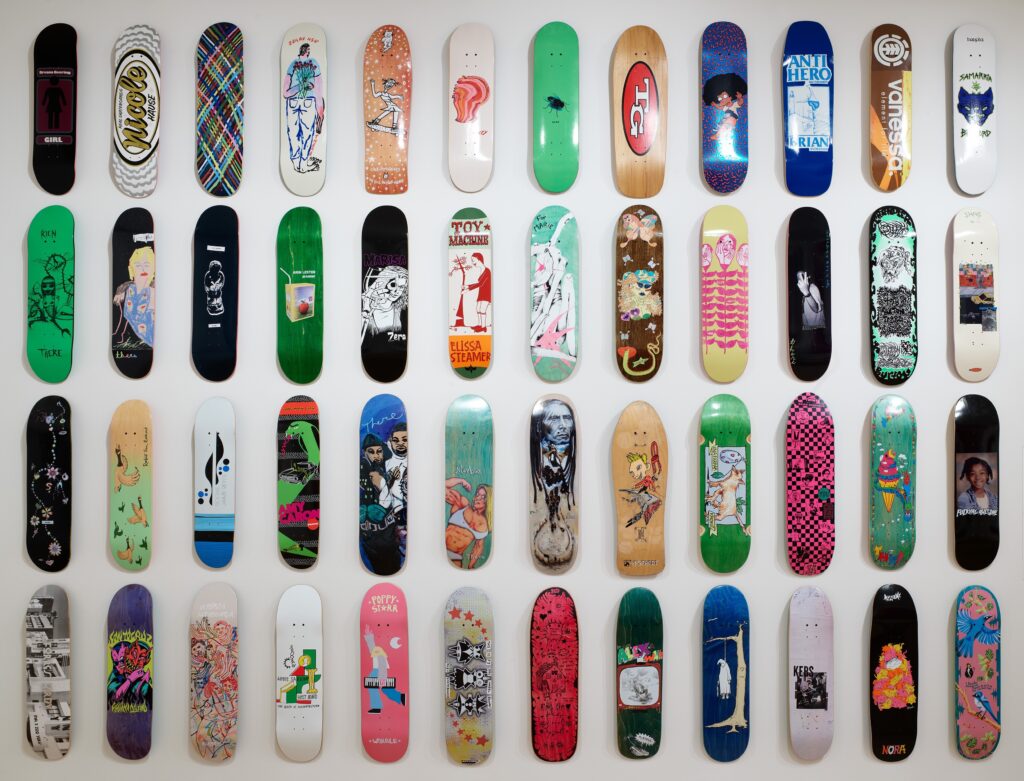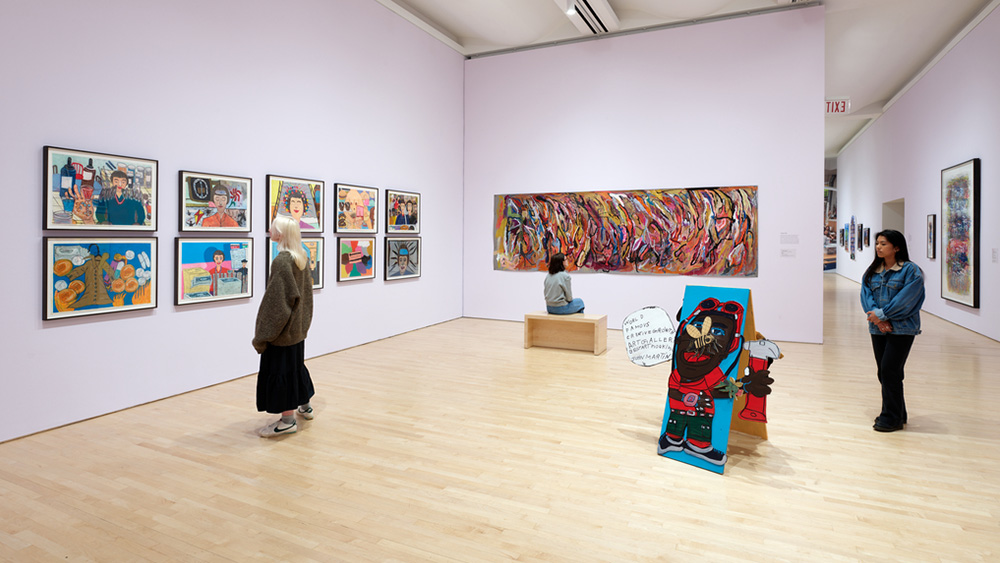What’s On View
Floor 4
Ruth Asawa: Retrospective
Celebrate the life and legacy of Ruth Asawa in this sweeping retrospective featuring over 300 artworks.
Closing Sept 02, 2025

Floor 3
Kunié Sugiura: Photopainting
Photography and painting unite in Kunié Sugiura's dynamic hybrid forms.
Closing Sept 14, 2025
Floor 3closing soon
Around Group f.64: Legacies and Counterhistories in Bay Area Photography
Using work by members of Group f64 as a nexus, this exhibition explores various histories of Bay Area photography from the 1910s to the present.
Closing July 13, 2025

Floor 6
Ragnar Kjartansson: The Visitors
An atmospheric video installation of artist Ragnar Kjartansson and his musician friends performing in a historic mansion.
Closing Sept 28, 2025

Floor 1free to see
Fortuna and the Immortality Garden (Machine)
Explore the wonder of Kara Walker’s garden of automatons set amidst an energy field of gleaming black obsidian.
July 1, 2024–Spring 2026

Floor 6
Yayoi Kusama: Dreaming of Earth’s Sphericity, I Would Offer My Love
June 22, 2024–Aug 10, 2025

Floor 5
Afterimages: Echoes of the 1960s from the Fisher and SFMOMA Collections
Ongoing

Various
Bay Area Walls
Ongoing
Floor 3
Table Manners
Sept 14, 2024–May 31, 2026

Floor 3
Alexander Calder: Dissonant Harmony
Ongoing

Floor 2
1900 to Now: SFMOMA's Collection
Ongoing
Floor 4
Freeform: Experiencing Abstraction
Ongoing

Floor 6
German Art After 1960
Ongoing

Installations and Special Projects
Floor 1free to see
Julie Mehretu: HOWL, eon (I, II)
Ongoing

Floor 1free to see
Al Wong: Twin Peaks
Apr 26, 2025–Summer 2026

Floor 2, Koret Education Centerfree to see
The Things We Use to Make the Things We Must
June 01, 2025–May 30, 2026

Floor 2, Helen and Charles Schwab Hallfree to see
Barbara Stauffacher Solomon: Strips of Stripes
Ongoing

Floor 5
Olafur Eliasson: One-way colour tunnel
Ongoing

Howard Street Entrancefree to see
Arborhythm
Ongoing

Floor 5
Yayoi Kusama: Aspiring to Pumpkin’s Love, the Love in My Heart
Sept 16, 2023–Nov 16, 2025

Get art, events, and stories delivered to your inbox
Floor 2
People Make This Place: SFAI Stories
Works across media by San Francisco Art Institute alumni and former faculty showcase the school’s legacy of experimentation.
Opening July 26, 2025

Floor 7
Suzanne Jackson: What Is Love
Celebrate Suzanne Jackson’s ground¬breaking artistic vision through more than 80 lyrical paintings and drawings from the 1960s to today.
Opening Sept 27, 2025

Floor 4
KAWS: FAMILY
KAWS: FAMILY explores the distinctive universe of pop culture–inspired characters created by Brian Donnelly, known globally as KAWS.
Opening Nov 15, 2025

Floor 3
Alejandro Cartagena: Ground Rules
Alejandro Cartagena’s photographs reveal the political, economic, and environmental forces shaping life in Mexico today.
Opening Nov 22, 2025

Floor 4
New Work: Samson Young
Dec 21, 2024–June 22, 2025

Floor 3
Alexandra Pirici: Re-collection
May 10–30, 2025
Floor 2free to see
2024 SECA Art Award: Rose D'Amato, Angela Hennessy, Rupy C. Tut
Dec 14, 2024–May 26, 2025

Floor 2
Unity through Skateboarding
Aug 17, 2024–May 04, 2025

Floor 2
Count Me In
Aug 17, 2024–Apr 27, 2025

Floor 2
When the World Is Watching
Aug 17, 2024–Apr 27, 2025
SFMOMA Exhibition History
Browse a complete list of SFMOMA exhibitions from 1935-2024
Floor 4
Amy Sherald: American Sublime
November 16, 2024–March 9, 2025

Floor 7
Get in the Game: Sports, Art, Culture
Oct 19, 2024–Feb 18, 2025

Floor 3
Consuelo Kanaga: Catch the Spirit
Sept 28, 2024–Feb 09, 2025

Floor 1free to see
Wu Tsang: Of Whales
Dec 19, 2022–Jan 26, 2025

Floor 2
(Super)Natural: Paul Klee and Masako Miki
Aug 17, 2024–Jan 12, 2025
Floor 4
New Work: Mary Lovelace O’Neal
Mar 16, 2024–Oct 20, 2024

Floor 2
Creative Growth: The House That Art Built
Apr 06, 2024–Oct 06, 2024

Floor 2, Koret Education Centerfree to see
Wondering About Museums
December 7, 2023–Fall 2024

Floor 4
What Matters: A Proposition in Eight Rooms
July 22, 2023–Sept 02, 2024

Floor 7
Art of Noise
May 4–August 18, 2024

Floor 3
Zanele Muholi: Eye Me
Jan 18, 2024–Aug 11, 2024

Floor 2
Chiura Obata
Dec 21, 2023–July 14, 2024

Floor 3
Marshall Brown Projects: Dequindre Civic Academy
Aug 12, 2023–July 07, 2024



